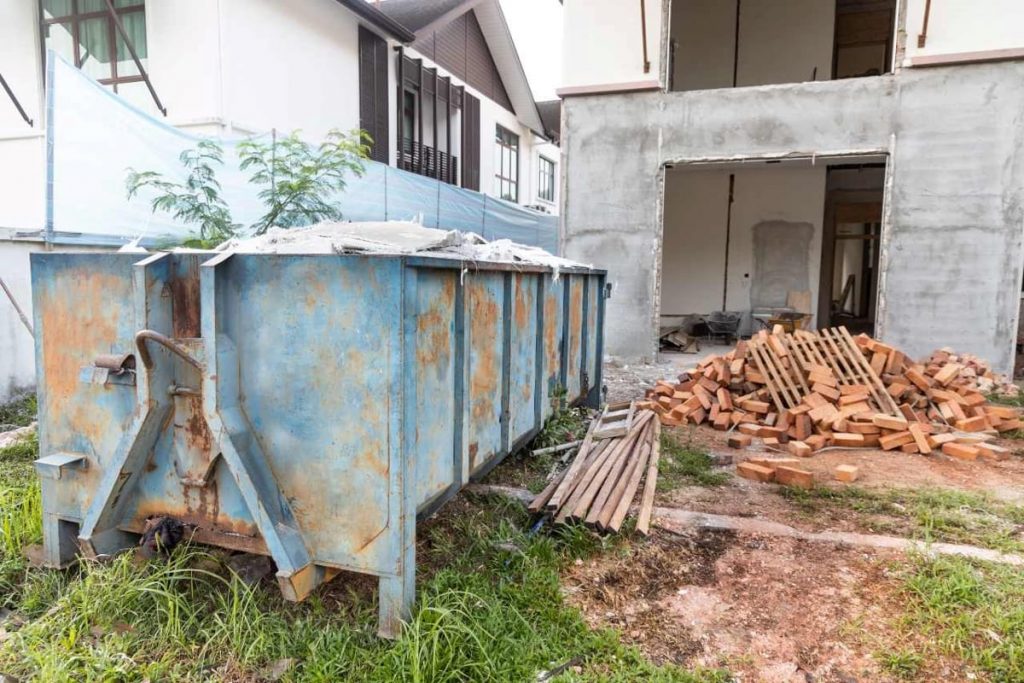Construction and Demolition (C&D) debris are materials that are generated during construction, demolition, and renovation of roads, buildings, and bridges. This debris is one of the largest waste streams in the U.S.
- It is estimated that about 40% of the raw materials used across the nation are used in construction. These materials end up discarded as trash and are estimated to be up to about 230 million – 530 million tons per year.
- Fortunately, about 90% of this construction debris are recyclable
To promote Sustainable Materials Management (SMM) approach, EPA has identified certain C&D materials that can be recycled to be used in new building projects. This approach helps avoid the need to use virgin materials for construction.
Keep reading to find out the benefits of C&D recycling.
What is Construction & Demolition Materials?
The C&D materials are heavy, bulky and include the following:
- Glass
- Steel
- Brick
- Concrete
- Piping
- Asphalt roofing material
- Wallboard and drywall
- Landscaping materials, such as rocks, soils, and trees
- Lumber
- Paper
- Clean cardboard
- Plastic wood (non-treated and unpainted)
- Scrap shingles
- Metal scraps
- Siding concrete

How to Dispose of Construction & Demolition Debris Properly?
Pro Tip: Installing a trash chute to transport waste to a central collecting site is a good idea.
The construction and demolition debris can be disposed of in 3 ways:
- Reuse: Uncontaminated construction debris is considered “clean” and can be reused, sold or donated. For instance, if you have separated concrete waste from other debris, you have a clean load of concrete that can be reused, sold, or donated for use in various other projects.
- Recycle: What can’t be reused can be recycled at the nearest recycling facility. Recycling fees are significantly lower than landfill disposal fees.
- Dispose of: If the construction and demolition materials cannot be reused or recycled, it must be hauled to the landfill. You can rent a dumpster rental company for doing the needful as well.
Environmental & Economic Benefits of Recycling Construction & Demolition Materials
- Creates Employment and Economic Activities
Recycling and reusing building materials help create job opportunities and support the economy, especially within the local community.
- Conserves Landfill Space
Recycling or reusing construction debris help expand the lifespan of landfills and reduce the expense associated with maintaining existing landfills and building new ones.

- Tax Deductions
The construction materials that are salvaged can be put back into the marketplace. There are tax benefits for donating the materials to qualified organizations, offsetting the extra cost associated with the deconstruction project. The tax benefits depend on the type and condition of the building materials. Usually, the after-tax value of the donated construction materials is about 35% of the total appraisal.
- Preserves Natural Resources
Reusing and recycling building materials help conserve natural resources. It reduces the need to mine and process virgin materials.
- Reduces Harmful Emissions
Hydrogen sulphide gas is formed in landfills when bacteria react with gypsum found in drywall. Recycling drywall reduces unpleasant gas formation and its associated health risks.
Author Bio:
Erich Lawson is passionate about saving the environment through effective recycling techniques and modern innovations. He works with Compactor Management Company and writes on a variety of topics related to recycling, including tips and advice on how balers, compactors and shredders can be used to reduce industrial waste. He loves helping businesses understand how to lower their monthly garbage bills and increase revenue from recycling.




Recent Comments